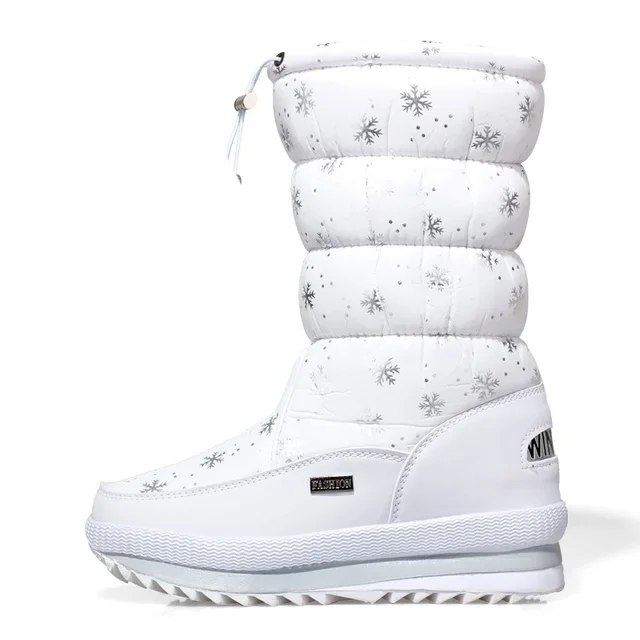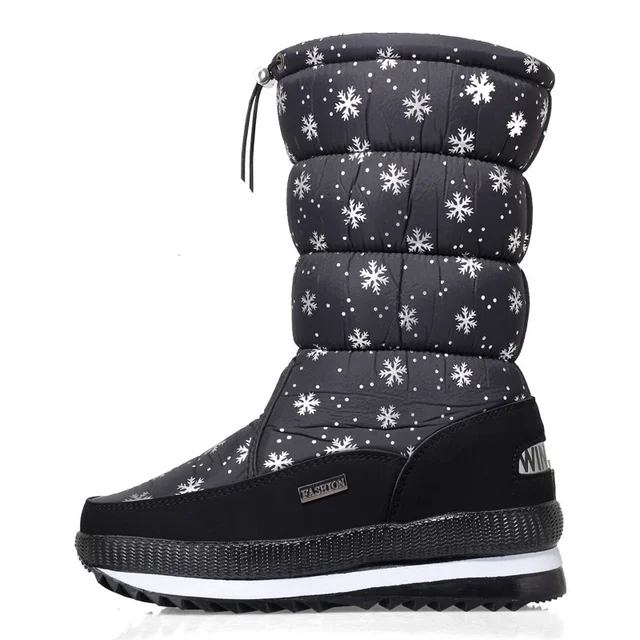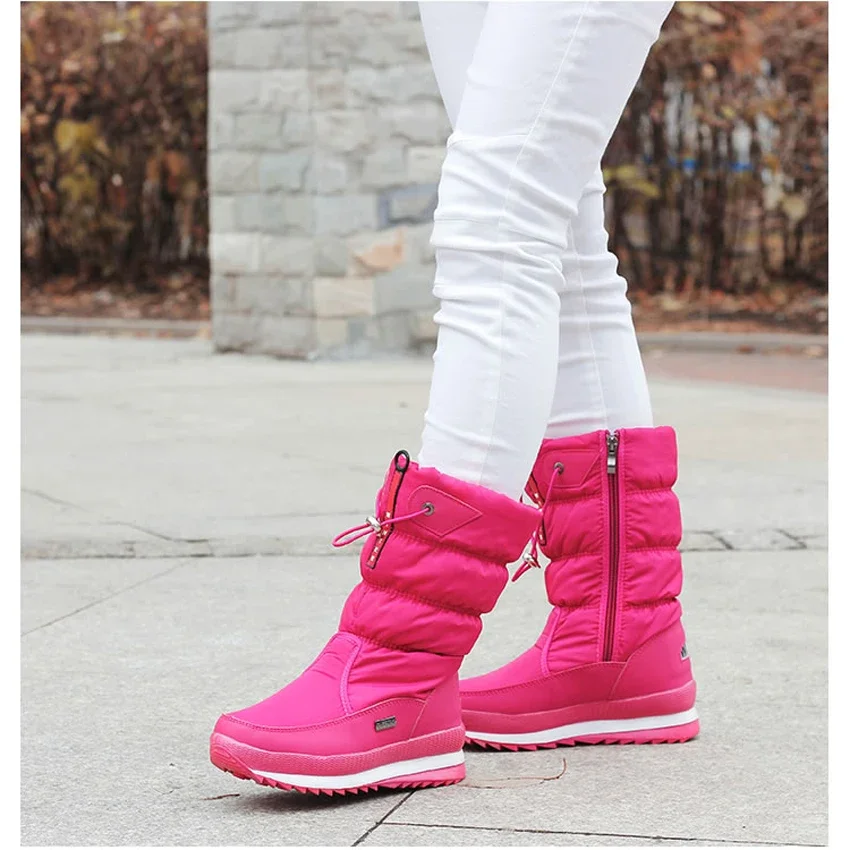Understanding Waterproof Snow Boots
What Makes Snow Boots Waterproof?
Snow boots waterproof are essential for winter weather, especially in areas with heavy snowfall. The primary feature that sets waterproof snow boots apart is their ability to keep your feet dry in wet and snowy conditions. This waterproof quality is achieved through various technologies and materials designed to repel water and provide insulation against the cold.
Waterproof snow boots are made with specialized materials that prevent moisture from penetrating the boot. These materials include waterproof membranes, such as Gore-Tex or similar fabrics, which create a barrier against water. These membranes are often layered with other materials to ensure that they do not lose their waterproof properties over time. Additionally, the seams of waterproof boots are sealed to prevent water from seeping in through any gaps.
In addition to waterproof membranes, many snow boots feature water-resistant leather or synthetic uppers. These materials are treated with water-repellent coatings that add an extra layer of protection. The soles of waterproof snow boots are also designed to offer traction on icy surfaces. This prevents slipping and keeps you stable while walking on snow or ice.

Benefits of Waterproof Snow Boots
The benefits of waterproof snow boots extend beyond keeping your feet dry. These boots provide comfort and warmth in harsh winter conditions. The insulation used in waterproof snow boots helps to maintain body heat, ensuring that your feet stay warm even in freezing temperatures.
Waterproof snow boots also offer durability. They are designed to withstand the rigors of snowy and icy environments. The high-quality materials and construction methods used in these boots ensure that they last through multiple winter seasons. This makes them a worthwhile investment for anyone living in a snowy region or who frequently engages in winter activities.
Moreover, waterproof snow boots are versatile. They can be used for various activities, from walking and hiking to shoveling snow. Their design allows for easy movement while providing the necessary protection against the elements. This versatility makes them a practical choice for anyone who spends time outdoors during winter.
Key Features to Look for in Waterproof Snow Boots
Insulation and Warmth
When choosing waterproof snow boots, insulation is a critical factor. Insulation helps to trap heat and keep your feet warm. Different types of insulation are used in snow boots, including synthetic materials and natural insulations like wool.
Synthetic insulations are commonly used in snow boots due to their moisture-wicking properties and ability to retain warmth even when wet. These materials are lightweight and provide excellent thermal insulation. On the other hand, natural insulations like wool offer superior warmth and breathability. Wool is also naturally moisture-wicking, which helps to keep your feet dry.
The thickness of the insulation can vary, so it is important to choose boots that offer the right level of warmth for your needs. For extremely cold conditions, look for boots with thick insulation or additional features like thermal liners. These extra layers of insulation ensure that your feet stay warm even in the harshest winter weather.
Traction and Grip
Traction is another important feature to consider in waterproof snow boots. The sole of the boot plays a significant role in providing grip and preventing slips on icy surfaces. Snow boots are often equipped with specialized outsoles made from rubber or other high-traction materials.
These outsoles have deep treads and patterns designed to provide stability on snow and ice. Some snow boots also feature additional traction elements, such as metal spikes or cleats, which enhance grip on slippery surfaces. When selecting snow boots, consider the type of terrain you will be walking on and choose a boot with appropriate traction features.
In addition to traction, the overall design of the boot should offer stability and support. Look for boots with reinforced heels and ankle support to prevent injuries and provide a comfortable walking experience. The combination of good traction and proper support ensures that you can move confidently and safely through snowy conditions.
Comfort and Fit
Comfort and fit are essential factors in choosing waterproof snow boots. The boots should provide ample cushioning and support for your feet. Many snow boots feature padded collars and insoles to enhance comfort and reduce fatigue during prolonged wear.
The fit of the snow boots is also crucial. Boots that are too tight can restrict movement and cause discomfort, while boots that are too loose can lead to blisters and instability. To ensure a proper fit, try on the boots with the type of socks you plan to wear in winter. This will help you determine if the boots provide the right amount of space and comfort.
Additionally, consider the boot’s design and features, such as adjustable laces or straps, which can help customize the fit. Some boots also have removable liners, allowing you to adjust the level of insulation based on the weather conditions. A good fit ensures that your feet remain comfortable and protected throughout the day.
Choosing the Right Waterproof Snow Boots for Your Needs
Everyday Use vs. Extreme Conditions
When selecting waterproof snow boots, consider how you will be using them. For everyday use in mild winter conditions, you may need boots that provide basic waterproofing and insulation. These boots should be comfortable and versatile, suitable for walking through snow or running errands.
For extreme conditions, such as deep snow or freezing temperatures, look for boots with enhanced features. These may include advanced insulation, heavy-duty traction, and reinforced construction. Extreme condition boots are designed to handle severe weather and provide maximum protection and warmth.
Evaluate your specific needs and choose boots that match your lifestyle and the weather conditions you will encounter. Whether you need boots for casual winter walks or challenging outdoor activities, selecting the right pair ensures that you stay comfortable and protected.

Size and Fit Considerations
The size and fit of your snow boots are crucial for comfort and effectiveness. When purchasing snow boots, it is important to try them on with the socks you will wear in winter. This will give you an accurate idea of the fit and ensure that the boots accommodate any extra layers.
If you are between sizes or have wide feet, consider choosing a boot with adjustable features or a wider fit. Some boots come with removable insoles, allowing you to adjust the fit as needed. Additionally, pay attention to the boot’s construction and materials, as they can affect the overall fit and comfort.
Properly fitting snow boots prevent issues such as blisters, cold spots, or restricted movement. Take the time to find a pair that fits well and meets your specific needs. This will ensure that you get the most out of your investment and enjoy a comfortable winter experience.
Brand and Quality
The brand and quality of waterproof snow boots can impact their performance and durability. Reputable brands often have a history of producing high-quality, reliable footwear. Researching different brands and reading reviews can help you make an informed decision.
When evaluating the quality of snow boots, consider factors such as material construction, warranty, and customer feedback. High-quality boots are usually made with durable materials and undergo rigorous testing to ensure they meet performance standards. Investing in a reputable brand can provide peace of mind and ensure that you receive a product that delivers on its promises.
Maintaining and Caring for Your Waterproof Snow Boots
Regular Cleaning and Inspection
Proper maintenance is key to extending the life of your waterproof snow boots. Regular cleaning helps to remove dirt and salt that can damage the materials. Use a damp cloth or brush to clean the surface of the boots. For stubborn stains, a mild soap solution can be effective.
Inspect your boots regularly for signs of wear and tear. Check the seams, soles, and waterproof membranes for any damage. If you notice any issues, address them promptly to prevent further damage. For example, replace worn-out insoles or repair damaged seams to maintain the performance of your boots.
Drying and Storage
After wearing your snow boots, it is important to dry them properly to prevent moisture buildup and odor. Remove the insoles and let them air dry separately. Avoid placing the boots near direct heat sources, as excessive heat can damage the materials.
Store your snow boots in a cool, dry place away from sunlight. Proper storage helps to preserve the shape and condition of the boots. Using boot shapers or stuffing the boots with newspaper can help maintain their form and prevent creasing.
Waterproofing Treatments
To maintain the waterproof properties of your snow boots, consider applying a waterproofing treatment. These treatments come in sprays or creams designed to enhance the water resistance of the boots. Follow the manufacturer’s instructions for application and reapply as needed, especially after cleaning or exposure to wet conditions.
Regularly treating your boots ensures that they remain effective in repelling water and extending their lifespan. This proactive approach to maintenance helps to keep your boots performing at their best throughout the winter season.

